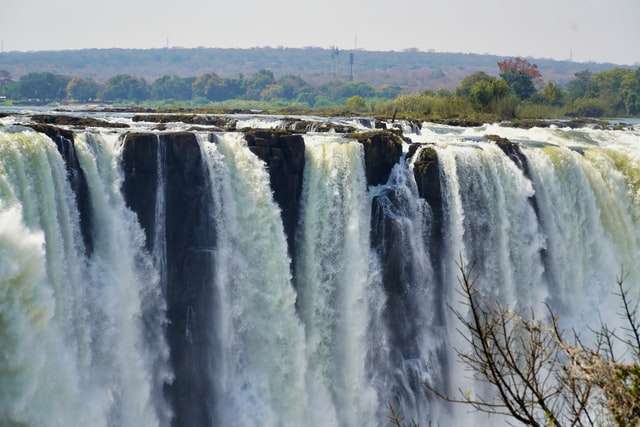There are many famous landmarks in Africa. Some are natural, some are man-made, and others are a mixture of both. This guide includes some landmarks that have stood the test of time. Some landmarks are famous for their beauty, while others have an important history attached to them (or just happen to be located at a popular tourist destination). Here are some of the most spectacular famous landmarks in Africa.
Table of Contents
ToggleAfrican Landmarks
Ngorongoro, Tanzania
Ngorongoro is a caldera, which means that it formed when an eruption from the nearby Ol Doinyo Lengai volcano threw material into the air and out of the ground. The crater itself is about 17 km in diameter, and it’s home to some of Africa’s most famous wildlife: elephants and lions are among the species you’ll find here.
Ngorongoro Crater, UNESCO World Heritage Site, is not just a tourist destination, but also a significant conservation site.
Kilimanjaro, Tanzania

Located in eastern Africa, Mount Kilimanjaro is one of the most well-known landmarks on the continent. Standing at 5,895 meters, it is also the highest freestanding mountain in the world. The mountain is a dormant volcano that last erupted around 200 years ago.
Mount Kenya
Mount Kenya is a stratovolcano in Kenya. It is the second-highest mountain in Africa and the highest mountain in Kenya. Mount Kenya is also the highest mountain with a glacier on earth, although it has been shrinking since 1912 when it was 1250 m high.
Mount Kenya National Park was listed as a UNESCO World Heritage Site in 1997 for both its cultural and natural values.
Giza Pyramids, Egypt
The Pyramids of Giza, in Egypt, are one of the most famous landmarks in Africa. The pyramids were built as tombs for the pharaohs and are an enduring symbol of Ancient Egypt. There are three pyramids: the Great Pyramid (also known as the Pyramid of Khufu), which was constructed during the rule of Pharaoh Khufu between 2589 BC and 2566 BC; the Pyramid of Menkaure, which was built between 2558 BC and 2532 BC; and The Great Sphinx (a statue with a human head on a lion’s body), which was carved out by Pharaoh Amenemhat II during his reign from 1916-1878 BCE.
Stone City, Zanzibar

Stone Town, a UNESCO World Heritage Site, is the old part of Zanzibar. It’s one of the few places in Africa where you can still see buildings made from coral stone. The city features Islamic architecture, Chinese temples and churches that were built by Europeans, who settled there during the 19th century.
Stone Town is located on the main island of Unguja in the Zanzibar Archipelago. This collection of buildings was constructed between 1830 and 1875 by Omani Arabs who came to Africa at that time. They were trying to avoid being occupied by Europeans, who had invaded their homeland earlier and taken over most of it during this period (1798-1804).
Table Mountain, Cape Town

Table Mountain is a flat-topped mountain forming a prominent landmark overlooking the city of Cape Town in South Africa. It is a significant part of the Table Mountain National Park and of the most visited landmarks in Africa. The mountain constitutes part of the well-known “Three Peaks” with Devil’s Peak and Lion’s Head, which are clearly visible from much of Cape Town. A popular tourist attraction, it offers spectacular views from its summit of Cape Town on one side, and Robben Island on another. This famous landmark in South Africa is worth visiting on your next trip to Cape Town.
Djenne Mosque, Mali
The Djenne Mosque, located in the city of Djenne in Mali, is a UNESCO World Heritage Site. It was built in the 13th century and has been restored several times since then.
The mosque’s most distinguishing feature is its large mud brick buildings that have survived for centuries thanks to careful maintenance by local people. This makes it the largest mud brick building in the world, it measures over 56 meters long and 36 meters wide! The roof structure is held together with wooden beams and palm timbers.
The structure was constructed over many years by different groups of people from across West Africa. Today it serves as a place of worship for Muslims throughout Mali, though at one point Christians were granted access before they were banned as part of French colonization efforts starting around 1860.”
Olduvai Gorge, Tanzania
Olduvai Gorge is a site in Tanzania where some of the earliest hominid remains have were found. It is located in the Great Rift Valley, which is a UNESCO World Heritage Site and has been for more than 40 years. The gorge itself features many remarkable features, including fossilized animals and plants that date back millions of years. One of the most interesting things about this place is that it may have been home to some early human species. Such as Homo habilis or Homo rudolfensis, who made tools out of stone around 2 million years ago.
Timbuktu, Mali
Timbuktu, or Tombouctou as the city is known in French, was founded by Tuareg nomads and has a rich history of trade with neighboring nations. The desert city was an important trading center for all three major commodities: salt, gold and slaves.
Today, Timbuktu’s economy relies on tourism from local travelers and tourists from around the world who come to explore this legendary city of gold.
Sphinxes of Abou Simbel, Egypt
The Sphinxes of Abou Simbel are a pair of monumental rock statues of the Pharaoh Ramesses II (c.1303–1213 BC). Each stands in front of a temple: one representing the king as Osiris and one representing him as Horus. This style was adopted by many other pharaohs including Amenhotep III, Tutankhamun, Thutmose IV, Akhenaten and Nectanebo I, but the only surviving examples today are these two at Abu Simbel.
They were moved to their present location in 1964 to avoid being submerged by Lake Nasser after construction on the Aswan High Dam began 20 years earlier. Originally they were carved into a cliff face overlooking what was then known as “Lake Amun”. The complex has four colossal seated statues that represent Rameses II as Osiris (a mythological god). There are also another four colossal standing statues depicting him as Horus (also a mythological god), each measuring 24 meters tall; these are flanked by 12 smaller columns with huge statues depicting gods from antiquity.
Tuthmosis III built this temple c 1450 BC for his father Seti I who requested it be built for him. It is now located 5 km away from its original site because no one wanted them to get flooded when Lake Nasser was created.
Malindi Pillar Tomb, Malindi
The Malindi Pillar Tomb, also known as The Tomb of Gedi, is a stone pillar grave built by the early Swahili people in Malindi, Kenya. It was constructed in the 15th century and is one of several similar cultural sites found along the East African coast.
The tomb was built to honor an important local leader named Gede or Karihia. According to legend, he was buried alive inside the tomb so that he could keep protecting his tribe from evil spirits after death.
Giraffe Manor, Nairobi

If you’re looking for an unusual place to stay, consider Giraffe Manor in Nairobi. This hotel was built in 1925 and is now home to a herd of Rothschild giraffes. The hotel itself was originally a coffee estate, but has been converted into a unique property that allows guests to interact with the animals. Located in the Karen suburb of Nairobi, this historic landmark is easily accessible by public transportation or taxi from around town.
Victoria Falls

Victoria Falls, located on the Zambezi River in Southern Africa, is a natural wonder and a UNESCO World Heritage Site. The mighty Victoria Falls are located on the Zambezi River between Zambia and Zimbabwe. The falls are famous for their awe-inspiring beauty and popularity among tourists.
Also read: the best things to do in Victoria Falls
The River Nile
The Nile is the longest river in Africa and the second-longest river in the world, after the Amazon. The Nile runs through ten countries: Burundi, Central African Republic, Democratic Republic of Congo, Egypt, Eritrea, Ethiopia, Kenya, Rwanda and Tanzania.
Conclusion
There are many more landmarks in Africa that we did not mention in this article. The continent has some truly unique places that are worth visiting if you ever get the chance. Wish you well on your journey through Africa.



